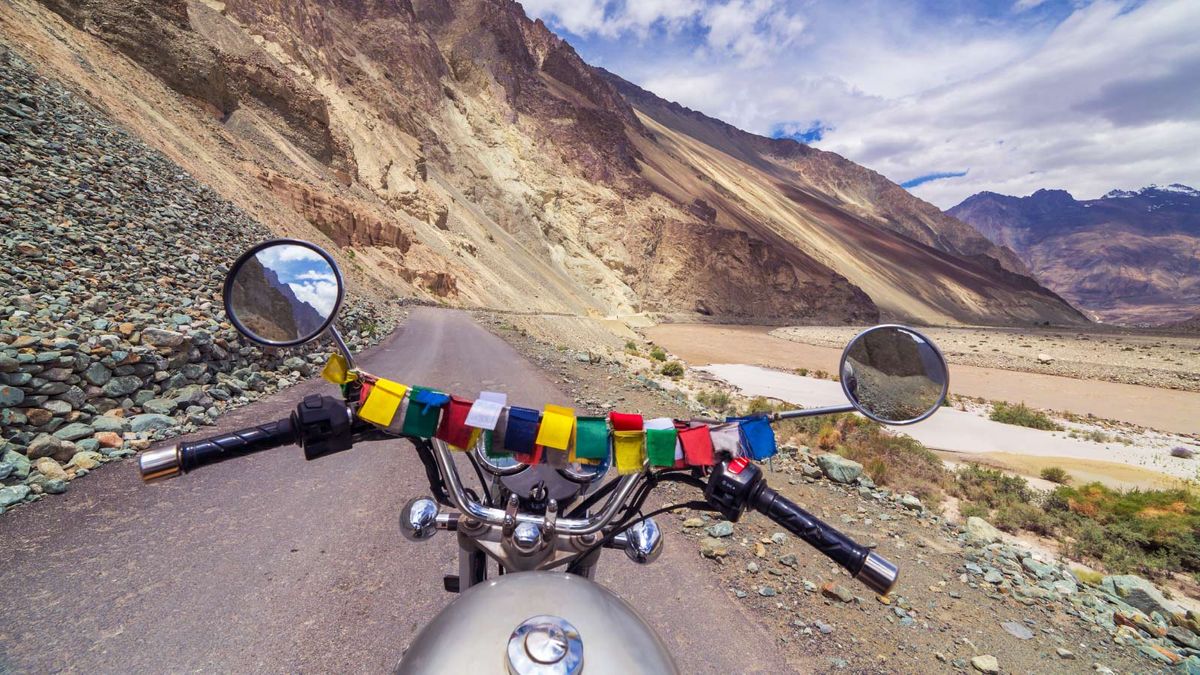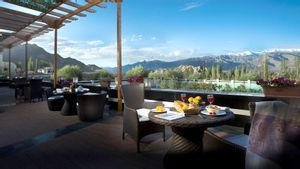A vast array of living and diverse cultural traditions exists in India, rightfully referred to as the intangible cultural heritage – one that contains masterpieces requiring institutional support and encouragement to ensure that they survive. As a result, there are concerted efforts in the direction of enhancing awareness and interest in Intangible Cultural Heritage (ICH) - safeguarding, promoting, and propagating it systematically.
There is no doubt that the Himalayas are one of the most biologically diverse regions of the planet. Almost every community here reveres nature and has a collection of legends, myths, and oral tales based on this relationship. Their ancient narratives further strengthen their ability to co-exist.

In a first-of-its-kind endeavour, UNESCO (United Nations Educational, Scientific and Cultural Organisation) and Royal Enfield have come together in a unique partnership to promote and safeguard the Intangible Cultural Heritage of India, beginning with the Himalayas. Marking the official announcement with a press event on August 22 at Bikaner House in Delhi, the initiative also saw the opening of a four-day creative showcase.
What the two names bring together
This partnership was inaugurated with a briefing led by Eric Falt, regional director, UNESCO and Siddhartha Lal, MD, Eicher Motors followed by an immersive journey across the Himalayas illustrated through food, music and folk tales. You can even travel across the Himalayas through their exhibition that showcases a substantial part of India’s cultural heritage consisting of an extraordinarily dynamic array of living heritage - from Ladakh to Arunachal Pradesh.
The ongoing show, titled Journeying Across the Himalayas, features works of artists from the Himalayan and the northeastern regions. Curated by Monisha Ahmed (co-founder of Ladakh Arts and Media Organisation) and Mary Therese Kurkalang (founder-director of KHUBLEI), the exhibition and programme feature eminent artists, designers, chefs, mixologists, musicians and prominent figures in the field of social development sector. This includes actor Adil Hussain, designer Peter D’Ascoli and Sonam Dubal, author Rita Banerji, mountaineer and entrepreneur Malika Virdi, conservationist Tsewang Namgail, mixologist Yangdup Lama, restaurant owner Nilza Wangmo, chef Anumitra Ghosh. The four-day programme includes panel discussions, textile studies, bamboo installations, film screenings, poetry, music and lecture demonstrations.

A common string that connects these places, irrespective of their local and national boundaries, is through local drinks that not only taste unique but can also soothe our senses. Noted mixologist Yangdup Lama had stirred some unique infusions such as the Brahmaputra Boat - a whisky cocktail served with Assam bay leaf cordial and Zutho, a slightly spicy fermented rice brew with blended Scotch topped off with traditional chilli tincture – creations that celebrated indigenous Himalayan ingredients.
The ongoing exhibition also includes works by artists including Dipankar Panging, Yawan Rai, and Monisha Ahmed. While Panging's Mimang Molai series uses recycled materials such as bamboo, recycled plastic, and cloth rags, Rai’s works depict the people and places in Sikkim.
In contrast, Ahmed’s photographs capture the ancient craft of weaving in Ladakh. Some of the photographs in the exhibition were also taken by riders from the Royal Enfield hub who rode along this extensive stretch and captured the lives and stories of these inner communities.
Why is this collaboration important
Intangible cultural heritage is directly linked to livelihoods. For instance, large numbers of women in rural India are engaged in weaving and the production of handicrafts, and India’s handloom and crafts sector have emerged as one of the country’s largest employers and facilitators for income generation in rural areas.
As part of its ongoing programme globally and in India, UNESCO has been spearheading the movement to identify, document and preserve the Intangible Cultural Heritage of India, which is one of the 178 countries to have adopted the 2003 UNESCO Convention for the Safeguarding of the Intangible Cultural Heritage (ICH), for decades. Apart from its incredible heritage of monuments, a substantial part of India’s cultural heritage consists of an extraordinarily dynamic array of living heritage. This includes traditions of music, dance, theatre, storytelling, festivals, and rituals.

During the launch of the four-day programme, Falt said, “The wealth of India’s living heritage remains largely untapped, and the task of recognising and preserving it is something that should be shouldered by all stakeholders, including the private sector. We are happy to celebrate this new partnership with Royal Enfield with a launch that focuses on parts of the Himalayas. We have focused on a number of States, but the Himalayas remain one of the areas where it has relatively little information.”

Over the years, Royal Enfield has played a leading role in galvanising communities and bringing them closer to the Himalayas. “The Himalayas is the spiritual home for the Royal Enfield and we are excited to partner with UNESCO to work toward building a sustainable future for this region. With more members of our motorcycling community heading there, Royal Enfield is working in this iconic landscape to promote sustainable tourism and build resilient communities,” Siddhartha Lal tells.

Moreover, Royal Enfield will start its great Himalayan exploration project in September where the team would be touring and documenting livelihoods, starting from the North-East.
“We aim to preserve and promote the culture, knowledge and traditions that are harmonious with fair and regenerative living and ensure that Himalayan communities are empowered to make decisions that support their resilience,” Lal signs off.




